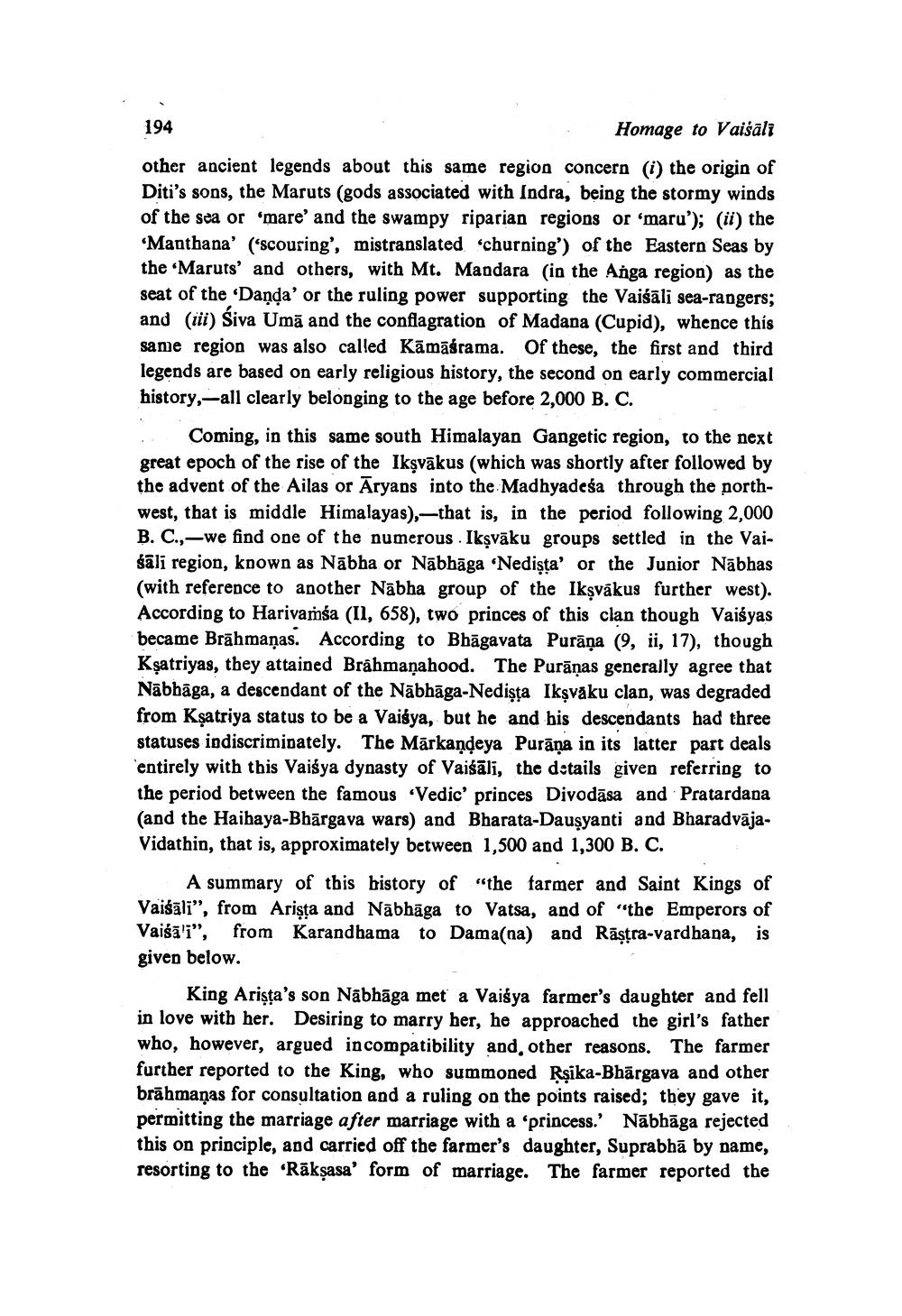________________ 194 Homage to Vaisali other ancient legends about this same region concern (i) the origin of Diti's sons, the Maruts (gods associated with Indra, being the stormy winds of the sea or 'mare' and the swampy riparian regions or 'maru'); (ii) the "Manthana' ('scouring', mistranslated churning') of the Eastern Seas by the Maruts' and others, with Mt. Mandara in the Anga region) as the seat of the 'Danda' or the ruling power supporting the Vaisali sea-rangers; and (iii) Siva Uma and the conflagration of Madana (Cupid), whence this same region was also called Kamasrama. Of these, the first and third legends are based on early religious history, the second on early commercial history,--all clearly belonging to the age before 2,000 B. C. Coming, in this same south Himalayan Gangetic region, to the next great epoch of the rise of the Iksvakus (which was shortly after followed by the advent of the Ailas or Aryans into the Madhyadesa through the northwest, that is middle Himalayas),--that is, in the period following 2,000 B. C.,--we find one of the numerous. Iksvaku groups settled in the Vaisali region, known as Nabha or Nabhaga Nedista' or the Junior Nabhas (with reference to another Nabha group of the Iksvakus further west). According to Harivamsa (II, 658), two princes of this clan though Vaisyas became Brahmanas. According to Bhagavata Purana (9, ii, 17), though Ksatriyas, they attained Brahmanahood. The Puranas generally agree that Nabhaga, a descendant of the Nabhaga-Nedista Iksvaku clan, was degraded from Ksatriya status to be a Vaisya, but he and his descendants had three statuses indiscriminately. The Markandeya Purana in its latter part deals entirely with this Vaisya dynasty of Vaisali, the details given referring to the period between the famous "Vedic princes Divodasa and Pratardana (and the Haibaya-Bhargava wars) and Bharata-Dausyanti and BharadvajaVidathin, that is, approximately between 1,500 and 1,300 B. C. A summary of this history of "the farmer and Saint Kings of Vaisali", from Arista and Nabhaga to Vatsa, and of the Emperors of Vaisali", from Karandhama to Dama(na) and Rastra-vardhana, is given below. King Arista's son Nabhaga met a Vaisya farmer's daughter and fell in love with her. Desiring to marry her, he approached the girl's father who, however, argued incompatibility and other reasons. The farmer further reported to the King, who summoned Rsika-Bhargava and other brahmanas for consultation and a ruling on the points raised; they gave it, permitting the marriage after marriage with a 'princess. Nabhaga rejected this on principle, and carried off the farmer's daughter, Suprabha by name, resorting to the Raksasa' form of marriage. The farmer reported the




